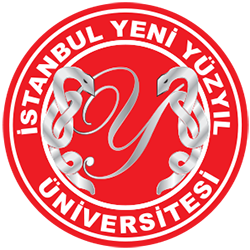Sutureless aortic valve replacement
Göster/
Tarih
2021-08Yazar
Sever, Kenan
Konukoglu, Oguz
Yildirim, Ozgur
Kilercik, Hakan
Mansuroglu, Denyan
Üst veri
Tüm öğe kaydını gösterÖzet
Objective: To compare the results of sutureless aortic valve replacement (AVR) with the conventional method. Study Design: A case-control study. Place and Duration of Study: Cardiovascular Surgery Unit, Istanbul Yeni Yuzyil University, Gaziosmanpasa Hospital, Turkey, from December 2014 to December 2019. Methodology: Patients undergoing AVR were enrolled. The inclusion criteria were severe symptomatic aortic valve disease, New York Heart Association (NYHA) class II or higher, and age >55 years. Perioperative clinical and echocardiographic outcomes were assessed in all patients. Results: Ninety-one patients (45 women, 46 men) underwent AVR (49 sutureless, 42 conventional). The average age was 73.08 ± 7.54 years in the sutureless group and 66.26±8.63 years in the conventional group. The mean cross-clamp and cardiopulmonary bypass (CPB) times were 72.86 ± 34.09 and 91.88 ± 36.98 minutes, respectively, in the former; and 104.96 ± 41.64 and 119.81 ± 40.45 minutes, respectively, in the latter. In the sutureless group, 30 (61.2%) patients underwent additional procedures such as CABG, mitral interventions, tricuspid repair, ascending aortic surgery, and myxoma removal. Preoperative peak and mean pressure gradients decreased from 76 and 48 mmHg to 16 and 9 mmHg postoperatively in the sutureless group; and from 70.9 and 44 mmHg to 24 and 12 mmHg in the conventional group. Paravalvular leak and permanent pacemaker requirement due to AV-block rates were 6.1%. The mean ICU stay was 3.69±6.75 and 2.31±1.80 days, the mean hospital stay was 10.08±6.56 and 8.62±3.28 days, and the 30-day overall mortality rates were 8.2% and 4.8% in the sutureless and conventional groups, respectively. Conclusion: Sutureless AVR has advantages of shorter cross-clamp time, reduced CPB duration, and postoperative aortic gradients. However, there was no advantage in terms of mortality or hospital stay. Its benefits could be more prominent in complex cases or minimally invasive surgery.
Bağlantı
https://www.jcpsp.pk/oas/mpdf/generate_pdf.php?string=S21vS1czakJNU0ErbnhDMERFaFZtQT09http://dspace.yeniyuzyil.edu.tr:8080/xmlui/handle/20.500.12629/2344
Koleksiyonlar

DSpace@İYYU by Istanbul Yeni Yüzyil University Institutional Repository is licensed under a Creative Commons Attribution-NonCommercial-NoDerivs 4.0 Unported License..













